Battery electric vehicles currently dominate the shift towards greener mobility, with lithium-ion cells ruling the roost. However, even this has some disadvantages to it. Two of the biggest of these are the limited lithium reserves and recycling of lithium-ion batteries. Of course, there are alternatives to lithium-ion battery technology when it comes to mobility. Out of the most popular alternatives, hydrogen fuel cells are a significant one.
Yesterday, Toyota has broken the world record for the longest distance covered in a single charge of a hydrogen fuel cell car. The Japanese company achieved the feat through its flagship hydrogen fuel cell car, the Mirai. The car covered a total of 1003 km (623 miles) and still had around 9 km (5.6 miles) of range left. Hyundai’s hydrogen fuel cell car, the NEXO, held the record previously with 778 km (484 miles).
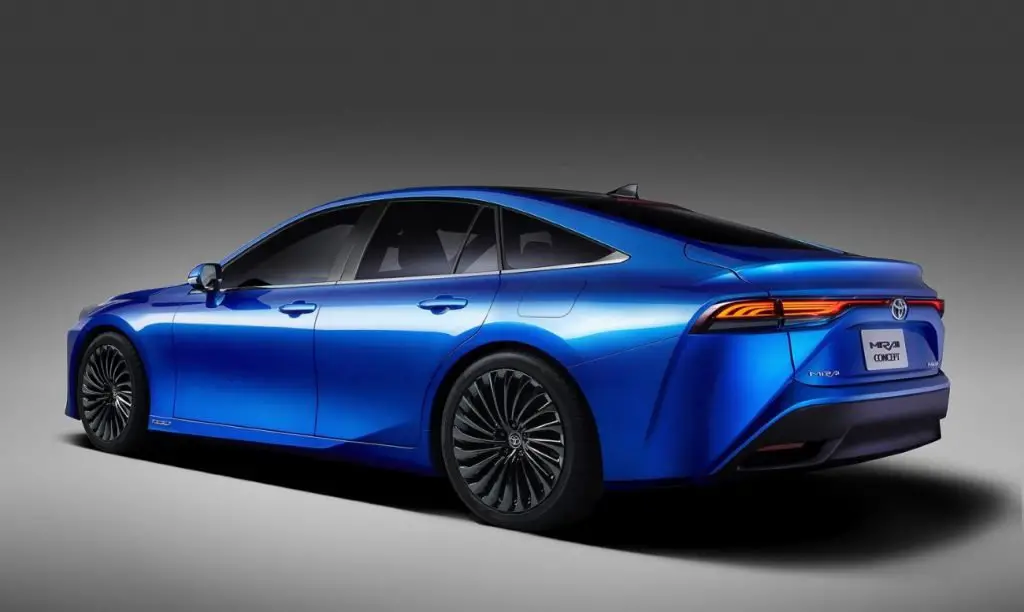
Toyota Mirai Breaks World Record: Completes 1000 Kilometres on Single Charge
Toyota Mirai’s Record-Breaking Journey
The journey began on the 26th of May, Wednesday, at 5:43 am. They started at the HYSETCO hydrogen station in Orly, France. On a single fill, they were able to complete 1003 km of driving. The drive mainly covered public roads in the Loir-et-Cher and Indre-et-Loire areas south of Paris. An independent authority certified the distance and consumption of hydrogen. Toyota was able to achieve a consumption of just 0.55 kg/100 km. The capacity of the tank is around 5.6 kg.
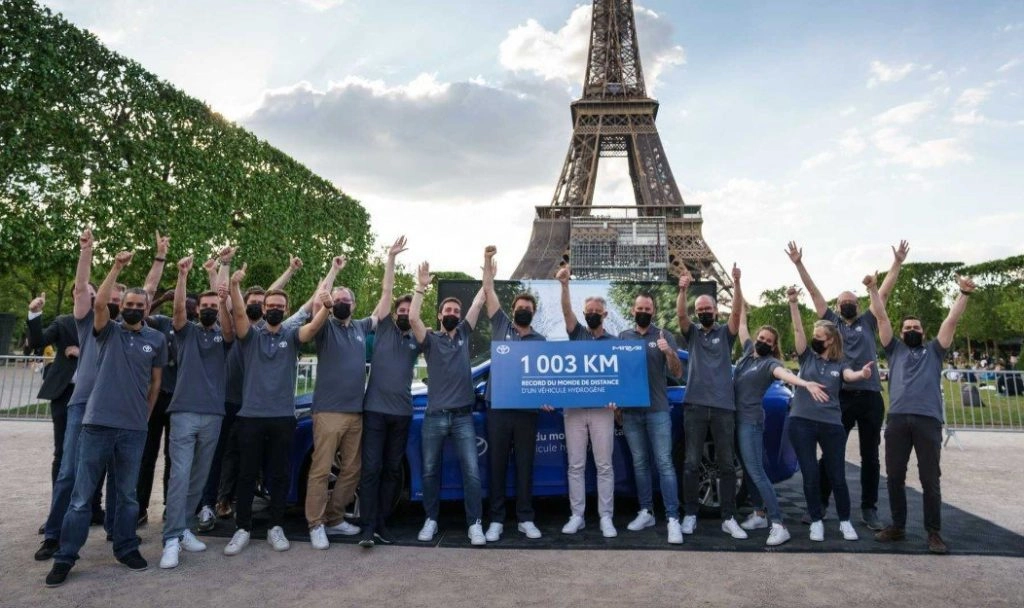
Of course, the drivers used the eco-driving style. But they did not adopt any special techniques that everyday drivers cannot use. And the most amazing thing is that the vehicle was ready for more driving after just 5 minutes of refuelling. So, does this change things for battery electric vehicles?
A Brief Overview of Hydrogen Fuel Cell Technology
Before we answer that question, let’s first understand the working of a fuel cell.
A fuel cell uses the chemical energy of hydrogen or another fuel to cleanly and efficiently produce electricity. If hydrogen is the fuel, electricity, water, and heat are the only products. Fuel cells are unique in terms of the variety of their potential applications; they can provide power for systems as large as a utility power station and as small as a laptop computer. These cells can be used in a wide range of applications, including transportation, material handling, stationary, portable, and emergency backup power applications.
Fuel cells can operate at higher efficiencies than combustion engines and can convert the chemical energy in the fuel to electrical energy with efficiencies of up to 60%. Fuel cells have lower emissions than combustion engines. Hydrogen fuel cells emit only water, so there are no carbon dioxide emissions and no air pollutants that create smog and cause health problems at the point of operation. Also, fuel cells are quiet during operation as they have fewer moving parts.
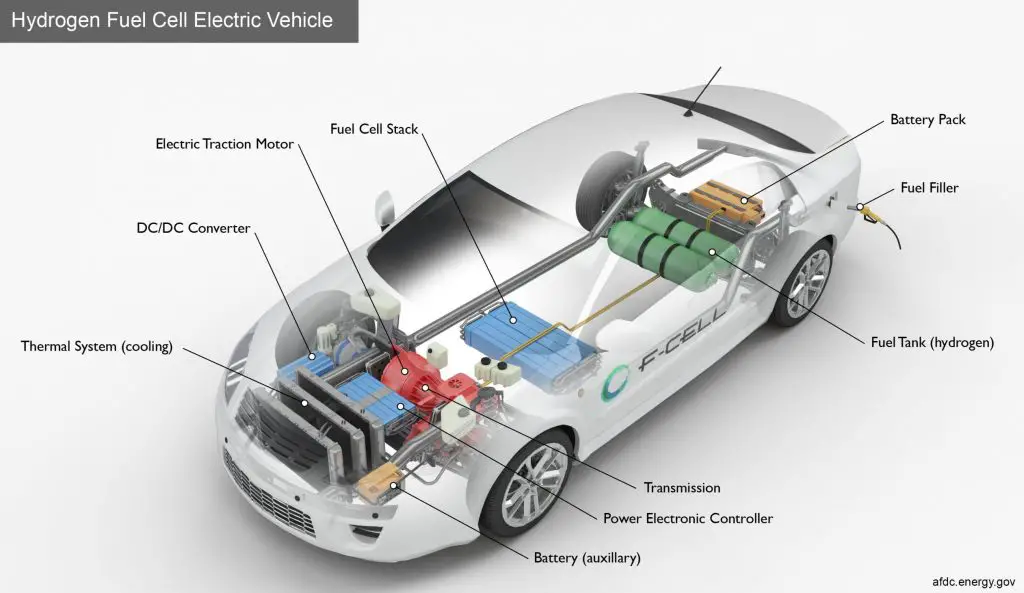
Fuel cells work like batteries, but they do not run down or need recharging. They produce electricity and heat as long as fuel is supplied. A fuel cell consists of two electrodes—a negative electrode (or anode) and a positive electrode (or cathode)—sandwiched around an electrolyte. A fuel, such as hydrogen, is fed to the anode, and air is fed to the cathode. In a hydrogen fuel cell, a catalyst at the anode separates hydrogen molecules into protons and electrons, which take different paths to the cathode. The electrons go through an external circuit, creating a flow of electricity. The protons migrate through the electrolyte to the cathode, where they unite with oxygen and the electrons to produce water and heat.
Drawbacks of Hydrogen Fuel Cell Technology
Of course, these cells have their own disadvantages as well. While it is true that hydrogen fuel cells do not emit harmful gases during operation, the same is not true for the production process to make hydrogen fuel. In fact, hydrogen power is nearly energy-neutral – which means that it takes almost as much energy to produce as what it produces.
Hydrogen is one of the most abundant elements on earth, but it is typically bonded to other elements and must be isolated to be used for energy purposes. The isolation processes are costly and emit carbon dioxide, which is counterproductive.
Does Toyota Mirai’s Achievement undermine Battery Electric Vehicles?
Not necessarily, because with increasing progress in lithium-ion cell technology, it is possible to cover 1000 km in less than 10 hours in a battery electric vehicle. Yes, you may have to take a few extra stops than what the Mirai did. But lithium-ion battery packs are evolving in two main areas – range and charging speeds. Both of these parameters will reduce the number of stops you need to take in the future.
The thing in favor of battery electric vehicles is the rigorously growing charging infrastructure. In comparison, the network of hydrogen refueling infrastructure is small and growing at a slower rate. Due to this, even a 1000-km range doesn’t seem very advantageous.
Our Opinion
Hydrogen fuel cell technology is something that may have a lot of potential but also has some downsides to it. Elon Musk has previously called hydrogen fuel cell technology for automobiles “mind-boggling stupid”. And he has received some challenges from hydrogen fuel cell manufacturers too. But the fact remains that hydrogen fuel cell technology is not a BEV-killer. The environmental effects of producing hydrogen fuel are comparable with the energy that a vehicle powered by this technology will save. Thus, until and unless we find environment-friendly methods of producing hydrogen fuel, this technology will not be a viable alternative.


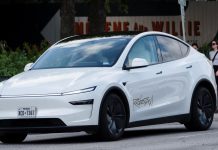


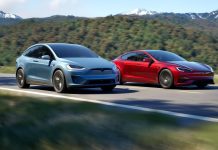








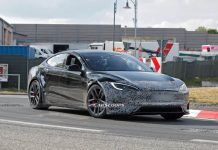

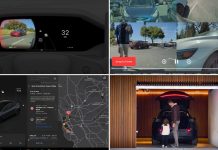
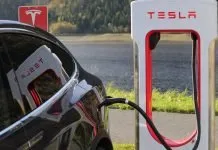

Solar hydrogen… Solves your problem.
Or hydro hydrogen
More the energy conversions more will be the losses. Also, it req.es more complex control units,advance light weight metal alloys,composite metal,plastic,fibre parts & thus added the end product cost.From power plant to transmission and to the wheel ends frictional & transmision losses should kept minium.All the platform should be easy to mfd.ed,simple with every system
,economical and easy to maintain & operate with low in running cost and avoids every time dependency on mfd.er.,easy avaliabilty of fuel everywhere,stringent safety norms with end products,low final product costs etc.which will leads to sucess of future car.from,P.S.Urankar Govt.apporoved Surveyor/Loss Assessor/Valuer,Automobile engineer,Dip.in Transport mgmt.C.I.R.T.
Pune-Govt.of India,M.M.S.prduction & Materials
Except for it’s still a concept not a production vehicle
Your article works reasonably well until you get to the claim that there’s no environmental way to generate hydrogen. What a bizarre statement from someone who obviously knows better. Hydrogen gas can be produced through electrolysis using solar energy. That’s one of its primary advantages. It provides the one thing that no other method currently provides, that is, unlimited potential storage of solar or wind energy in a form that can be easily transported.
B F D
Well yes this is quite true creating hydrogen and oxygen using solar electricity! I used to do this in my backyard 60 years ago for my hydrogen balloons and attached notes for the finder to call when it finally came down. I got calls from all around the world! So tell me why do you think it is that nobody has created solar hydrogen farms? They could make a literal killing off of cheap hydrogen! The prohibitive cost the hydrogen fuel nowadays is why I didn’t go that way with my newest vehicle! Going instead with a leaf!
Let’s go up to lake Mead or some other similar such place is start a solar hydrogen farm and transport it to fueling stations for 1/2 the current cost!